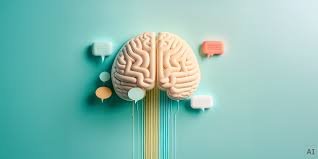Have you looked at yourself in the mirror today? A plain, simple mirror with only one purpose—to reflect your image. It shows your form, highlights imperfections, and lets you study your expressions. But the mirror doesn’t know you. Its only power is reflection. It creates a surface, not substance.
We can stare into it for hours, yet it will never reveal our thoughts or identity. First, we create the reflection, and then the reflection shapes us. Mirrors create feedback loops. Today, our mirrors are digital. Artificial intelligence reflects us too—shaping how we live and work.
With AI, digital agents can act as one-person teams. In fact, you’re probably already using an AI-powered service—77% of people do—and it’s helping businesses gain a stronger foothold in their operations.
But is AI really that powerful? Let’s explore.
The Business Impact of Artificial Intelligence
According to a Genesys report, 70% of CXO leaders consider AI crucial for customer experience operations in the next two to three years. Another 59% believe integrating AI will boost customer loyalty and lifetime value.
Within five years, 50% of customer service and support organizations are expected to implement GenAI-driven virtual assistants (VAs) for both agent support and customer-facing tasks.
And if you think smartphones are the most significant invention in modern history, think again. No matter how “smart” they get, smartphones remain metallic boxes without artificial intelligence. AI is what truly makes them indispensable in daily life—from navigation apps to customer service chatbots.
It’s hard to imagine life without AI.
Understanding Artificial Intelligence: What It Really Is
The textbook definition of artificial intelligence is that it enables machines to simulate human learning, comprehension, problem-solving, decision-making, creativity, and autonomy.
Put simply, AI-powered applications can:
-
See and identify objects
-
Understand and respond to human language
-
Learn from new information and prompts
-
Make tailored recommendations
-
Act independently without human input
A self-driving car is the perfect example—it knows when to change lanes, when to accelerate, and when to slow down.
Breakthroughs in Generative AI
In 2024, researchers and practitioners are focused on generative AI—a technology that creates original text, images, and videos from simple prompts.
With artificial intelligence, repetitive tasks like sorting emails, entering data, or writing basic reports are no longer time-consuming. In a recent survey, 70% of workers said the greatest benefit of automation is reducing time wasted on repetitive work.
Advances in AI have dramatically boosted efficiency and opened new business opportunities. Before AI, it was hard to imagine software connecting riders to taxis on demand. Yet Uber did exactly that—and became a Fortune 500 company.
How Does AI Work?
AI systems function by analyzing massive amounts of labeled training data. They recognize correlations and use those patterns to make predictions.
For example:
-
A chatbot trained on text conversations can generate natural, human-like exchanges.
-
An image recognition tool can identify and describe objects after analyzing millions of examples.
Programming AI systems focuses on four main cognitive skills:
-
Learning: AI acquires data and applies algorithms, turning them into actionable information.
-
Reasoning: It selects the right algorithms to achieve the best results.
-
Self-Correction: AI continuously evaluates solutions and fine-tunes its processes for accuracy.
-
Creativity: Using neural networks and statistical models, AI generates new text, images, music, and ideas.
The Real Meaning Behind “Artificial”
We’ve seen what artificial intelligence can do—but why is it called artificial? Why combine “artificial” and “intelligence” into one phrase?
Because AI mimics human intelligence. Machines can now think, make decisions, and act autonomously—with humans guiding the loop. This creates super-agency—a state where productivity and creativity increase exponentially.
AI doesn’t just automate tasks; it automates cognitive functions. That’s what makes it transformative.
AI as a Catalyst for Change
Artificial intelligence has the potential to surpass past innovations—from the printing press to the automobile. It is not just another technology; it’s a catalyst for unprecedented economic growth and societal change.
AI is revolutionizing how we live, work, and think. The question is: will you be part of this transformation, or will you watch from the sidelines?
So, why not be part of the story—and change how you run your business?


